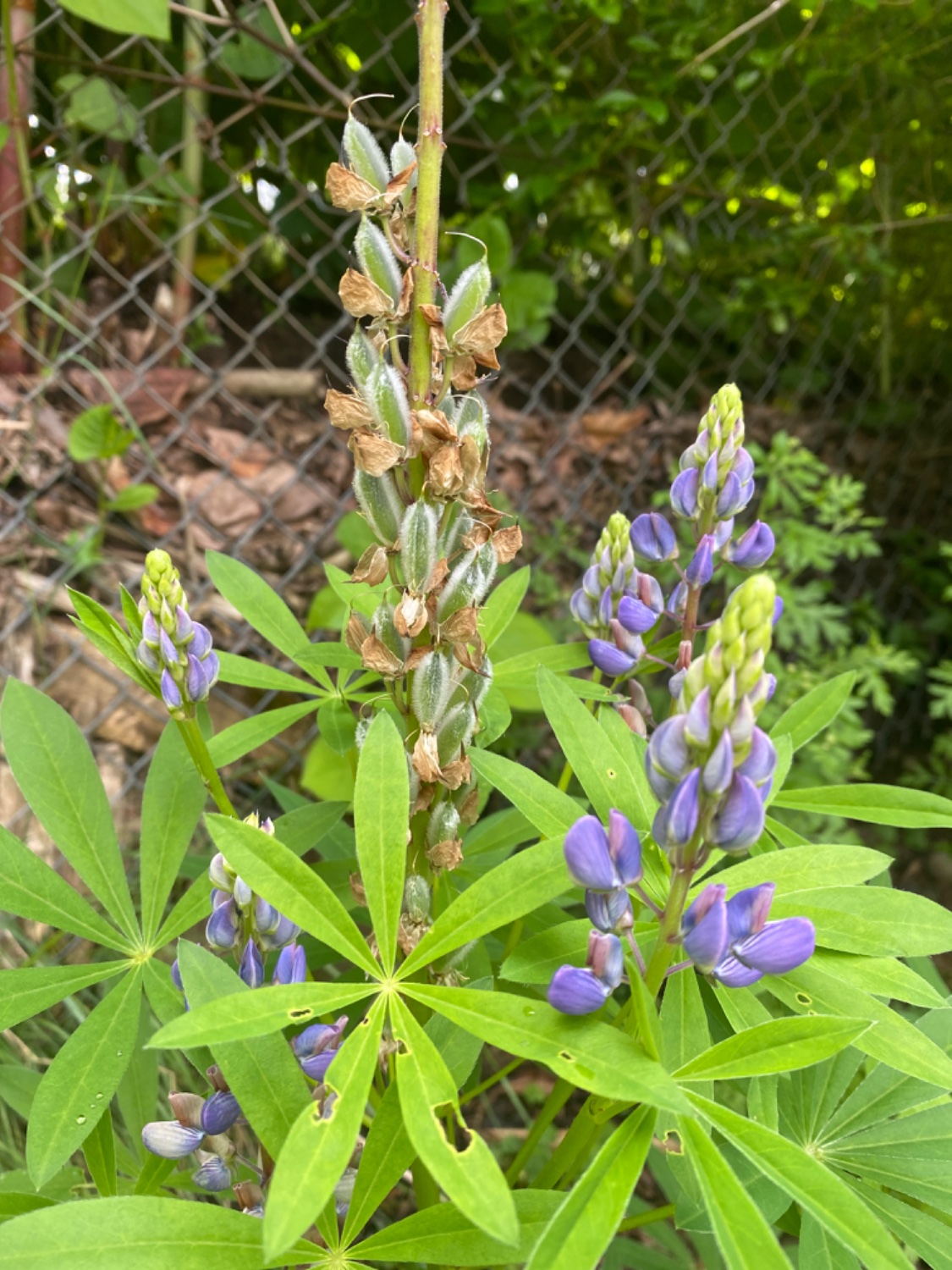It’s easy! Actually these are from seeds I harvested in a park. After the flowers bloom the seed pods will develop. They can be opened up and planted in autumn or spring. Lupines are legumes like peas, so look for pea pods and let them ripen until the seeds are black
To add to this: wait until the pods are brown and dried and close to popping open; if you’re uncertain, they start popping open from the bottom up so you can wait until a few pods have popped, then harvest seeds from the rows above them.
To plant, you can spread a handful of seed in the desired spot in the fall (depending on your climate and when exactly you spread them, they’ll either begin sprouting in the late fall or spring). I’ve also had great success planting them in pots in early-to-late spring; I’ve heard they require “scarification” so I take a very sharp knife and slice off a tiny part of the seed’s hard shell. It’s finicky work and not necessary, but does improve germination rate. I’ve also experimented with cold stratification, but that seems unnecessary for the varieties I’ve grown (Western Washington State natives). Once a plant is established in your yard and begins dropping its own seeds, you’ll have tons of little volunteers every year.
There are many, MANY species of lupine, from 6ft+ globes to tiny rock/sand dwellers only a few inches tall. Some species are annuals and some are perennials (although the perennials can be quite short-lived, only a few years). I’ve successfully grown some of the smaller varieties in containers, but many lupine have extremely long taproots and will struggle if confined. They do best when given an area that they can take over/dominate; think of it more like a lupine patch rather than an individual lupine plant.
While they’re a bit more wild than your standard garden plant, lupine are fantastic additions to any garden where they’re locally native (much of North America… but make sure to select a species local to your area; they’re aggressive invasives outside their native range!). Besides their unique foliage and beautiful flowers, they are a bumblebee favorite! Plus the perennials are evergreen in more mild climates (zones 9+ or so?)
It’s easy! Actually these are from seeds I harvested in a park. After the flowers bloom the seed pods will develop. They can be opened up and planted in autumn or spring. Lupines are legumes like peas, so look for pea pods and let them ripen until the seeds are black
To add to this: wait until the pods are brown and dried and close to popping open; if you’re uncertain, they start popping open from the bottom up so you can wait until a few pods have popped, then harvest seeds from the rows above them.
To plant, you can spread a handful of seed in the desired spot in the fall (depending on your climate and when exactly you spread them, they’ll either begin sprouting in the late fall or spring). I’ve also had great success planting them in pots in early-to-late spring; I’ve heard they require “scarification” so I take a very sharp knife and slice off a tiny part of the seed’s hard shell. It’s finicky work and not necessary, but does improve germination rate. I’ve also experimented with cold stratification, but that seems unnecessary for the varieties I’ve grown (Western Washington State natives). Once a plant is established in your yard and begins dropping its own seeds, you’ll have tons of little volunteers every year.
There are many, MANY species of lupine, from 6ft+ globes to tiny rock/sand dwellers only a few inches tall. Some species are annuals and some are perennials (although the perennials can be quite short-lived, only a few years). I’ve successfully grown some of the smaller varieties in containers, but many lupine have extremely long taproots and will struggle if confined. They do best when given an area that they can take over/dominate; think of it more like a lupine patch rather than an individual lupine plant.
While they’re a bit more wild than your standard garden plant, lupine are fantastic additions to any garden where they’re locally native (much of North America… but make sure to select a species local to your area; they’re aggressive invasives outside their native range!). Besides their unique foliage and beautiful flowers, they are a bumblebee favorite! Plus the perennials are evergreen in more mild climates (zones 9+ or so?)
Awesome, we have pods gallore right now. thanks!